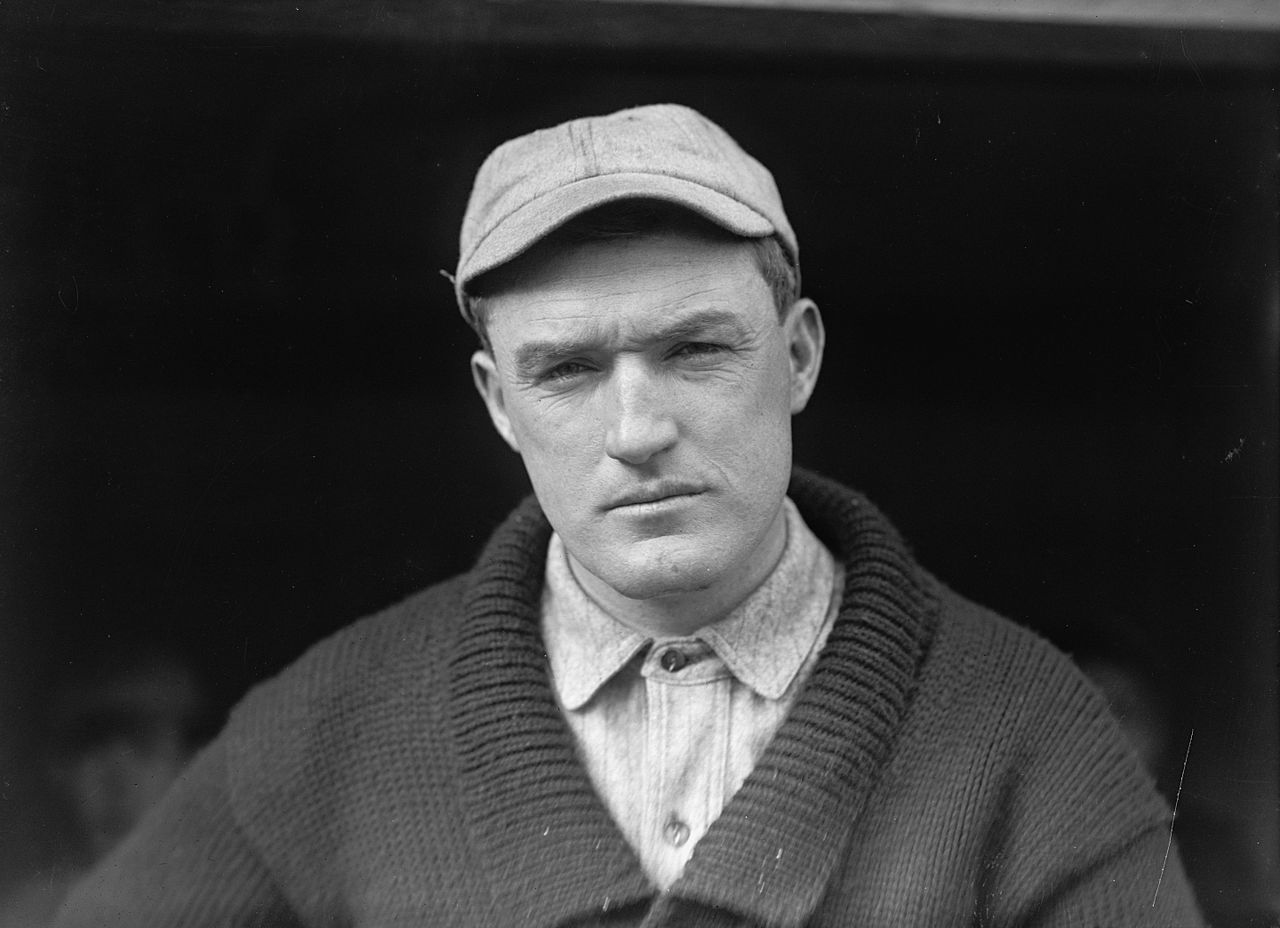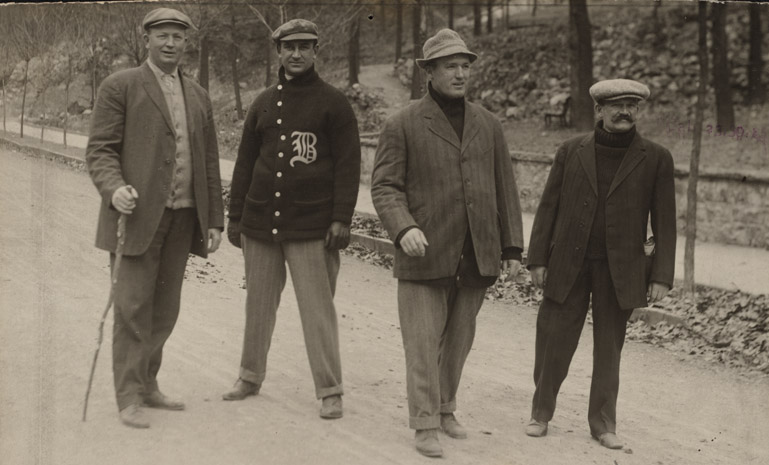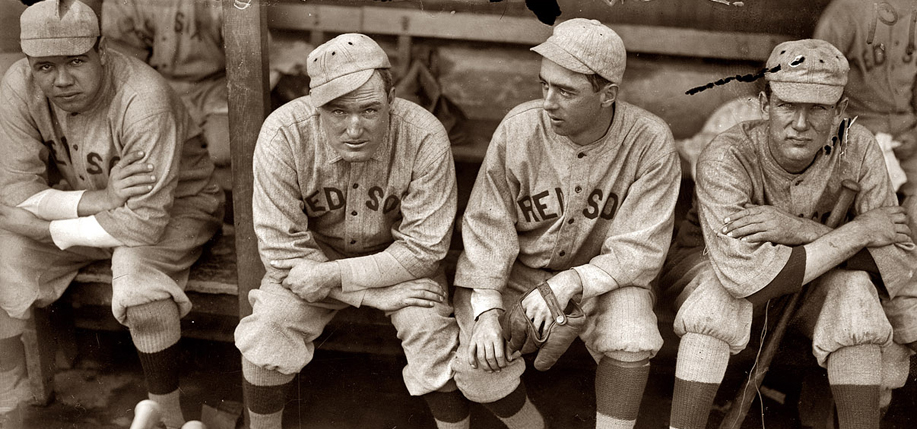Managing Babe Ruth, winning multiple World Series, and the no-nonsense authority of Bill “Rough” Carrigan.
To control a brash young Babe Ruth – who joined the Boston Red Sox at age 19, fresh out of an institution for troubled youths – a strong presence was needed.
Enter Red Sox player-manager Bill “Rough” Carrigan, who, despite his average size, was a notorious brawler, viewed by many as the fiercest man in a league that included such feisty characters as Ty Cobb. Aside from being feared, Carrigan – who, for almost a century, was the only Sox manager to win two World Series titles – was also genuinely respected, and Ruth would later describe him as the best manager he ever had.
According to most sources, Carrigan was born on October 22, 1883, in Lewiston, Maine. He was the youngest of three children, and his parents, John and Annie Carrigan, were Irish-Catholic immigrants who “had arrived in the United States prior to the Civil War,” according to Mark Armour, writing for the book Deadball Stars of the American League.
Carrigan’s youth was filled with physical activity, be it farm work or sport. After excelling as an athlete at Lewiston High School, he headed to Holy Cross in Worcester, Massachusetts, where his baseball coach astutely converted him from an infielder to a catcher. At the end of his second year at Holy Cross, he signed a Major League Baseball contract with Boston (the current Red Sox were then called the Boston Americans). His debut came on July 7, 1906.

It soon became clear that Carrigan feared no one. Nicknamed “Rough” by the press, he used to exchange taunts with the pugnacious legend Ty Cobb and once “took the ball and slammed it into Cobb’s mouth,” according to Derek Gentile’s book The Complete Boston Red Sox. Rough would find himself in separate scrapes with two of Cobb’s Detroit Tiger teammates, including George Moriarty, with whom he engaged in a notorious slugfest following a collision at home plate.
Whenever Carrigan was catching, home plate could be a contentious piece of real estate for anyone looking to score. His intrepid plate blocking caused Chicago White Sox manager Nixey Callahan to say: “You might as well try to move a stone wall.” The “stone wall” was also known for being a superb game-caller for pitchers. As for offensive production, his .257 batting average was decent. But with just six home runs in ten seasons, he was not much of a power hitter (though, in fairness, he did play in the “Dead-Ball Era,” when home runs were a comparatively rare event). In general, his contributions were of a sort that didn’t appear on the back of a baseball card.
Still not even 30 years old, Carrigan was selected as the Sox manager amid the team’s lackluster standing at the mid-season mark of 1913. Initially, he was not too pleased with this new task. Aside from the fact that he’d liked the outgoing manager, Jake Stahl, Carrigan wasn’t eager to take charge of a roster that had veterans who were older and ostensibly better-qualified for the managerial position.
He may have been reluctant to accept the job, but he sure wasn’t hesitant once he took over as a player-manager. He even fined one of his pitchers for failing to make a batter “hit the dirt” when the pitcher was ordered to throw inside.
It seems that the Sox were in need of Rough’s stern authority. Team chemistry was lousy, as the roster was divided, to a large extent, along Protestant and Catholic lines. Among the Catholic players who elicited Protestant disapproval was a swaggering rookie pitcher named George Herman Ruth.
Carrigan had persuaded ownership to purchase Ruth’s contract – then a minor league pitcher – from Baltimore. And he was behind the plate to catch the tall lefty for his major league debut on July 11, 1914.
Later on, when the cocky young Ruth began to misbehave, Carrigan decided to make him his roommate; Ruth started to behave, at least for a while, which was more than any other manager would achieve.
Having steered the Sox to a second-place finish in 1914, Carrigan would manage the team to consecutive World Series titles in 1915 and 1916. Then, at the top of the baseball world, he walked away from the game. As he was now married with a young daughter, he had grown weary of the long baseball season and wanted to spend more time with his family.
Shortly after returning to his hometown of Lewiston, Maine, he became involved with real estate, owning a group of movie theaters, which he later sold at a significant profit. Whether he was running businesses or players, it seemed he had a knack for knowing what to do.
This managerial prowess was acknowledged time and again, as each off-season some Major League ball club made an attempt to draw him out of his baseball retirement. Finally, after a full decade of resistance, Carrigan returned to baseball, rejoining the Sox as their manager. He would wish that he stayed home, as the team finished last each of the three years during his second stint. There was also a generational divide: Rough felt that these players were not focused enough on baseball and too concerned with “golf and stocks and where they were going after the game.”
When Carrigan left baseball for the second time, everyone knew it was forever. Despite the foul taste of those last-place seasons, he did manage to return to Fenway Park for commemorative events. And he was named to baseball’s “Honor Roll,” described by the New York Times as “an adjunct of the Hall of Fame,” in 1946. When Ruth died two years later, the Bambino bequeathed his former manager a silver bowl trophy.
Back in his hometown – where he raised his three children with wife Beulah Carrigan, née Bartlett, – Carrigan had launched a banking career, ultimately becoming President of Peoples Savings Bank in Lewiston. He died in Lewiston at age 85 on July 8, 1969, some five weeks before an iconic music festival known as Woodstock brought national attention to a blossoming youthful counterculture. One can only imagine what old Rough would’ve thought about that generation.

_______________
This article was originally printed in the October / November 2016 issue of Irish America. ♦


Leave a Reply